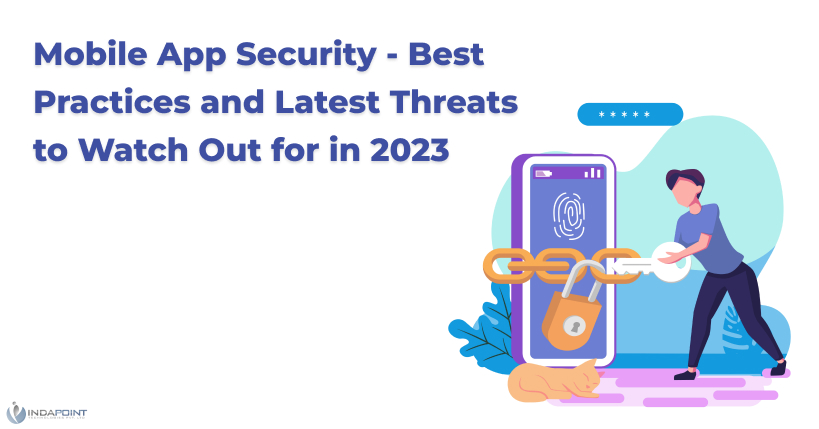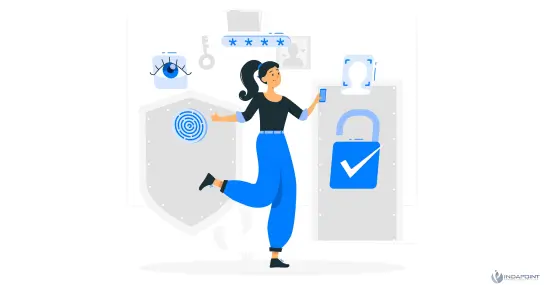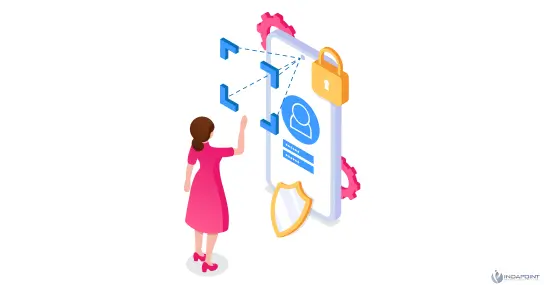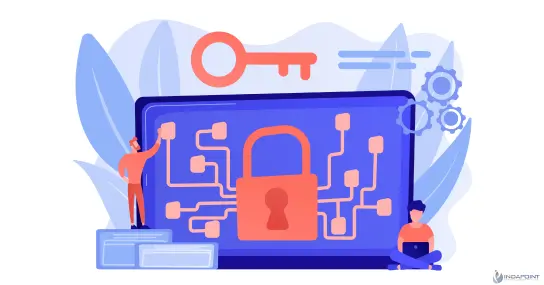Mobile App Security – Best Practices and Latest Threats to Watch Out for in 2023
June 19, 2023

Mobile app development is gaining momentum. This is mainly due to rapid technological advancements and the IT industry. While developing software in large quantities or to a high degree does not ensure safety against hackers and other malicious entities, it can help reduce the risk.
A simple, delicate app on a mobile device can reveal confidential business data. This can ultimately damage your reputation. Mobile app security is a must-have with increased cyber-attacks and security breaches.
Mobile application development, such as insecure data storage, communication code, and encryption, is at risk. You should use high-quality technologies and tools to protect your apps against severe threats like fraud, phishing, malware, and other unexpected attacks.
We will also cover some best practices that help secure your mobile apps.
What is Mobile App Security?
Users who engage in online transactions unknowingly leave a digital footprint that includes their name, address, and contact information.
This data can enhance the user’s experience and open them to external threats if stored inappropriately or insecurely.
Mobile application security is a proactive measure to protect applications from unauthorized access. Prioritizing the security of mobile apps is, therefore, crucial to reducing potential risks. Understanding and using authentic tools and technology is best to avoid unfavorable circumstances later.
Threats of Mobile App Security
You must protect yourself against these threats, whether creating a mobile application or using them frequently.
Malware Attacks

Malware is malicious software that can infect a device or mobile application and steal personal information. It can spread via links, downloads, or other apps. Cybercriminals are always looking for easy ways to spread malware to more people. Mobile apps are the main targets of cybercriminals, as millions download and use them daily.
How do cybercriminals spread malicious code through mobile apps, however? They upload an app with malicious codes or inject it into an existing one. They also use the name of a popular app to create a maliciously coded copy of it.
An Authentication Method That is Not Safe
When your application does not expect users to enter a secret phrase, it is called unreliable validation. Hackers don’t need to crack complicated passwords to gain access to your app. While authentication isn’t necessary for every app, apps dealing with sensitive data, such as social media and banking apps, are essential. If your app needs authentication, use two-factor verification and ensure a secure password policy. This will protect your app from unauthorized access.
Jailbreaking or Establishing
The method of gaining root access to the working framework of a device, known as jailbreaking or setting up, can lead to extreme security risks. Root access is used to bypass the security efforts of an app and allow noxious codes to run on a gadget. It can also give hackers access to all sensitive data in the device’s memory.
Poor Encryption
Encryption involves scrambling the data to make it unreadable. Someone with a secret key must decipher it. Hackers can access your data easily if you don’t use encryption. App developers often need to pay more attention to encrypting their data properly. This can result in serious security risks.
Ensure that the encryption in your app is done correctly and securely. It is essential to use robust encryption algorithms, secure communication protocols, and adequately store encryption keys.
Mobile App Security Best Practices
These best practices will help us to protect our mobile applications from potential threats and sensitive data.
Use Server-Side Authentication

Ensuring that multifactor authentication is done on the server after successful credential validation is essential. If your app stores data in the client, it can only be accessed with a valid credential. To improve security, you should also avoid storing passwords on your device if you are using persistent authentication. Instead, create unique authentication tokens that are used for each device.
Create robust user authentication

It is the difference between an enjoyable shopping trip that succeeds and one where your account is hijacked. You can offer your customers a choice of multifactor, 2-factor, or biometric data like fingerprints. Or you can even go for more straightforward options such as PIN codes. The identity verification layer protects your customers and builds their trust in your app.
Integrate High-Level Authentication Methods

Security breaches are common in today’s digital world, with many users. Accessing software requires strong authentication, which includes personal credentials and passwords. Encourage users to use strong passwords to reduce the risk of attack. Two-factor authentication is an additional layer of protection, as it notifies you when a suspicious login attempt occurs and improves overall security.
Implement APIs with High Authorization
It’s crucial to ensure that APIs are secure, as businesses use them to speed up their development processes. APIs are susceptible to external breaches. Unauthorized APIs or those with loosely-coded code can provide hackers with an advantage. To ensure maximum security, it is recommended that APIs are centrally authorized. It helps to protect sensitive data and reduce the risk of unauthorized access, protecting businesses from potential data breaches.
Use Cryptographic Algorithm

Today, cryptography is a vital technique for protecting networks and digital devices. Cyber security experts use cryptography techniques and tools, including key-based authentication and Java cryptography architecture. These technologies are used to meet the security requirements for mobile apps and reduce development risks. These tools constantly evolve as new technologies such as blockchain, AI, and IoT emerge.
Avoid storing sensitive data on your mobile device, like passwords and hardcoded keys. iOS developers use code encryption to prevent reverse engineering, but it is not foolproof. It’s, therefore, essential to assume attackers can decrypt information on the client side at any moment. Even the most robust encryption algorithms can be compromised by poor key management. Only use deplored and disapproved algorithms and create your encryption protocol if you understand security systems.
Conclusion
Mobile app security and data privacy are crucial. With each passing day, people’s reliance on their mobile phones grows. For mobile app protection, it is essential to understand the risks, implement secure coding, perform continuous security testing, and provide a positive user experience.




